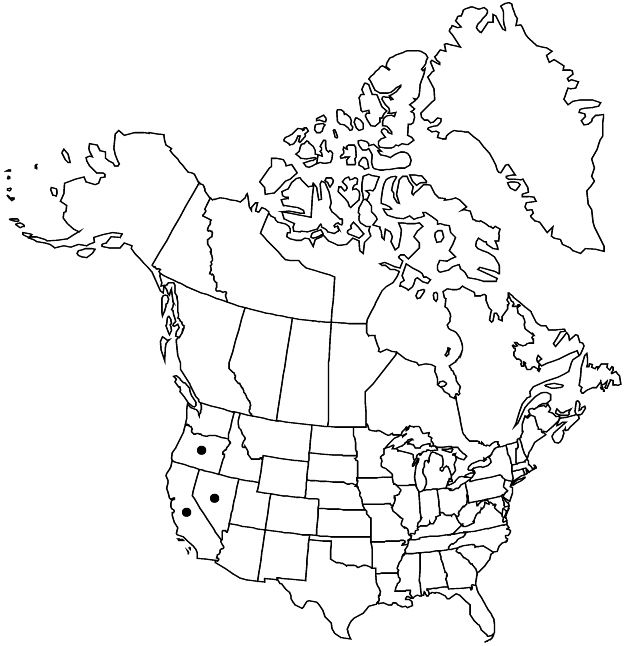Difference between revisions of "Eriogonum nudum var. oblongifolium"
Proc. Amer. Acad. Arts 12: 264. 1877.
FNA>Volume Importer |
FNA>Volume Importer |
Revision as of 22:36, 16 December 2019
Plants 5–10(–18) dm. Flowering stems not fistulose, 2–5(–8) dm, tomentose to floccose. Leaves basal; blade 2–4 × 1.5–2 cm, tomentose abaxially, thinly floccose adaxially, margins plane. Inflorescences cymose, 20–50(–100) × 10–50 cm; branches tomentose to floccose. Involucres 3–6 per cluster, 3–5 mm, tomentose. Flowers 3–4 mm; perianth white to rose or yellow, pubescent. 2n = 40.
Phenology: Flowering May–Oct.
Habitat: Sandy to gravelly slopes and flats, grassland and chaparral communities, oak and montane conifer woodlands
Elevation: 20-1900 m
Distribution

Calif., Nev., Oreg.
Discussion
Variety oblongifolium is the widespread and rather common tetraploid phase of the species, being the only expression with pubescent flowering stems. It occurs from southern Oregon south to northern California and western Nevada. The plants vary in flower color. This variety and var. pubiflorum occasionally grow together. In such instances, differentiation between the two based on the presence or absence of tomentum can be arbitrary.
Selected References
None.